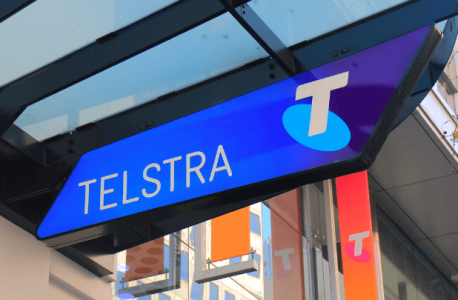Despite a staggering $2.1bn profit, why is Telstra still increasing your mobile fees?
- Replies 14
Recent reports indicate that Telstra, the largest telecommunications company in Australia, has achieved a remarkable 13.1 per cent rise in their yearly profits, reaching a substantial $2.1 billion.
Notably, their mobile business experienced a 8.3 per cent growth, resulting in an income of $10.3 billion. In the 2023 fiscal year, Telstra's overall income stands at $23.2 billion.
Given these impressive financial figures, one might assume positive implications for customers. Could this potentially lead to more affordable mobile plans for Australians?
Unfortunately, no.

At the same time, Telstra announced that their mobile postpaid plans would be increasing in line with Australia's rising cost of living.
This means that, as of July 4, most plans will have a $4 increase on their monthly payments—an added inconvenience for an overwhelming number of customers in the current economy.
So why has Telstra increased its fees?
When questioned by Guardian Australia, the Telecom giant's Chief Executive, Vicki Brady, had this to say: 'In terms of mobile pricing, if you look at the [Australian Bureau of Statistics] CPI data, you'll see that telecommunication services have gone down in real terms over the last few years, so I don't see telecommunications, pricing, contributing to inflation.'
Brady emphasised that customers now heavily rely on connectivity, leading to high demand on Telstra's mobile network, which necessitates significant investment. Because of this, the company has to carefully consider and make decisions to maintain pricing at a 'sustainable level'.
This approach ensures they continue investing in and delivering a superior customer experience.
But what of their customers?
Reportedly, the pressure of extra payments has become too much for many. According to an Australian Communications Consumer Action Network (ACCAN) survey conducted in March this year, over a quarter of all respondents said their phone and internet costs were unaffordable, with one in five actually missing payments as a result.
Brad Whitcomb, Telstra's Group Executive for Consumer and Small Business, acknowledged a decrease in customers opting for Telstra's postpaid mobile service following the announcement of price hikes.
However, this was within the company's expected outcome. Brad emphasised that this change is a temporary response to the price increase. While some customers are leaving Telstra entirely, the company successfully retains a significant portion by directing them to options like the discount brand Belong or connecting them with Telstra resellers.

With this in mind, we must remember that most of us have options. If you're struggling with their fees, various resellers (such as Tangerine, MATE, and nu mobile) can assist you with lower-rate plans.
At the SDC, we always suggest shopping around to compare what's out there—regarding features, quality of service, customer service, and pricing. The bottom line is that it pays to be comfortable and informed about what you're signing up for.
We hope this article helps enlighten you so you can make the most informed decision possible for your needs! What are your thoughts? Let us know in the comments section below!
Notably, their mobile business experienced a 8.3 per cent growth, resulting in an income of $10.3 billion. In the 2023 fiscal year, Telstra's overall income stands at $23.2 billion.
Given these impressive financial figures, one might assume positive implications for customers. Could this potentially lead to more affordable mobile plans for Australians?
Unfortunately, no.

Australia’s largest telecommunications company reported an annual profit of $2.1bn, with a total income of $23.2bn for the 2023 financial year. Credit: Shutterstock.
At the same time, Telstra announced that their mobile postpaid plans would be increasing in line with Australia's rising cost of living.
This means that, as of July 4, most plans will have a $4 increase on their monthly payments—an added inconvenience for an overwhelming number of customers in the current economy.
So why has Telstra increased its fees?
When questioned by Guardian Australia, the Telecom giant's Chief Executive, Vicki Brady, had this to say: 'In terms of mobile pricing, if you look at the [Australian Bureau of Statistics] CPI data, you'll see that telecommunication services have gone down in real terms over the last few years, so I don't see telecommunications, pricing, contributing to inflation.'
Brady emphasised that customers now heavily rely on connectivity, leading to high demand on Telstra's mobile network, which necessitates significant investment. Because of this, the company has to carefully consider and make decisions to maintain pricing at a 'sustainable level'.
This approach ensures they continue investing in and delivering a superior customer experience.
But what of their customers?
Reportedly, the pressure of extra payments has become too much for many. According to an Australian Communications Consumer Action Network (ACCAN) survey conducted in March this year, over a quarter of all respondents said their phone and internet costs were unaffordable, with one in five actually missing payments as a result.
Brad Whitcomb, Telstra's Group Executive for Consumer and Small Business, acknowledged a decrease in customers opting for Telstra's postpaid mobile service following the announcement of price hikes.
However, this was within the company's expected outcome. Brad emphasised that this change is a temporary response to the price increase. While some customers are leaving Telstra entirely, the company successfully retains a significant portion by directing them to options like the discount brand Belong or connecting them with Telstra resellers.
Key Takeaways
- Telstra has defended its decision to increase the cost of mobile plans despite reporting a profit increase of 13.1 per cent and an annual profit of $2.1bn.
- Despite the healthy profit and considerable growth in its mobile business, Telstra has raised most mobile postpaid plans by an average of $4 a month, citing increased business costs.
- Telstra's Chief Executive, Vicki Brady, maintains that telecommunications pricing does not contribute to inflation and that the price increase was necessary to sustainably invest in maintaining and enhancing Telstra's mobile network.
- An Australian Communications Consumer Action Network survey found that 26 per cent of respondents thought their phone and internet costs were unaffordable, with one in five reporting they missed a payment because they couldn't afford it.
With this in mind, we must remember that most of us have options. If you're struggling with their fees, various resellers (such as Tangerine, MATE, and nu mobile) can assist you with lower-rate plans.
At the SDC, we always suggest shopping around to compare what's out there—regarding features, quality of service, customer service, and pricing. The bottom line is that it pays to be comfortable and informed about what you're signing up for.
We hope this article helps enlighten you so you can make the most informed decision possible for your needs! What are your thoughts? Let us know in the comments section below!







